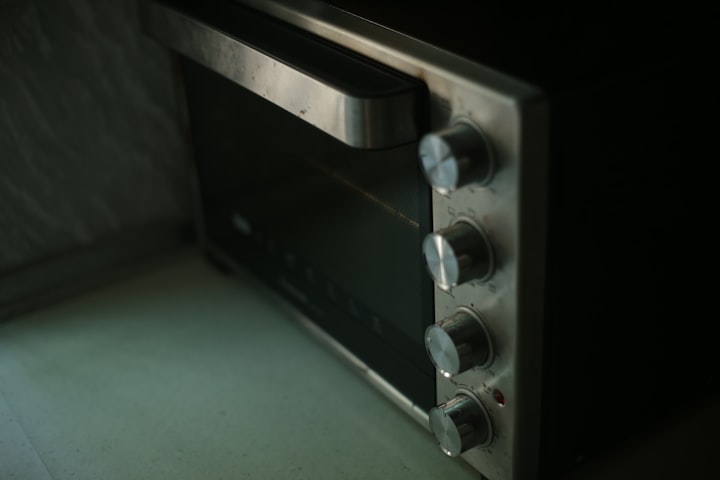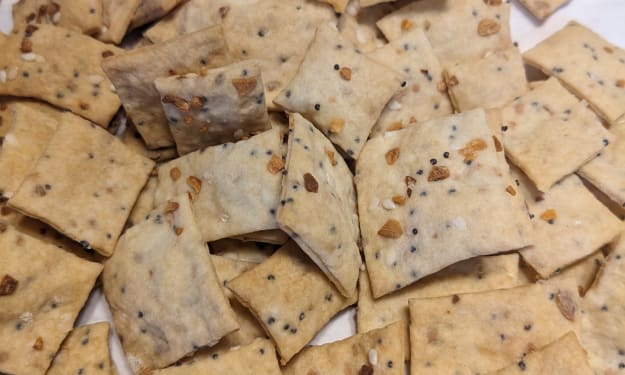Living Without a Microwave
I'm not crazy, just particular
If you're reading this, you've probably considered ditching your microwave and you may be a bit intimidated by the thought of losing that convenience. Health concerns are the main reason I've heard other people trying to use microwaves less, but you don't have to be afraid of your food becoming radioactive to enjoy other methods of reheating your food. Are microwaves bad for us? Probably. Was that enough to make me stop using them? Absolutely not. I'm just that picky, I guess.
I've always had a beef with microwaves. They never heat anything evenly, especially if it has multiple components. Single portions are too small but multiple portions are too big. They are a total pain to clean. And quite frankly, the food just doesn't taste as good. I would rather eat a piece of cold pizza than one that's been in the microwave. So between quarantine and becoming a stay-at-home mom with a work-from-home husband in 2020, I decided to start using other reheating options. Little did I know, I was getting myself ready for the next home we would live in that didn't have one at all! I thoroughly enjoy eating food warmed in my Instant Pot, oven, or on the stove. It feels like eating a freshly cooked meal more often than not! Regardless of your reasons for considering a microwave-free (or reduced) lifestyle, here are some tips and tricks for making the change.
1. Use the steam function on the Instant Pot. This is a great option for any type of one-pot meal, single portions, rice dishes, and things you're afraid of drying out. Make sure your food is in/on something that won't melt. Glass, ceramic, etc. will work. I've never had any problems using my Pyrex or Fiesta dishes with this method! Put a trivet into the bottom of the Instant Pot with a bit of water (a cup is plenty), set your dish on top of the trivet, seal the top, and press "Steam." I usually have it set for 15-20 minutes, but keep in mind that it takes a few minutes to come to pressure and start the timer. One of the main drawbacks of this method is that the size of the container has to fit inside the pot, so I often have to change containers and often only reheat one plate at a time. This is my go-to for Cody's lunches when there are only enough leftovers for one person.
2. Put a cold dish in a cold oven. Again, Pyrex, ceramic dishes, anything but plastic. I rarely end up using an actual sheet pan. One of my favorite things about this method is that I can pop the leftovers straight from the fridge to the oven. The trick here is that you can't preheat it. The risk of putting a glass leftover container in a preheated oven is that the rapid temperature change can cause it to crack or even shatter. If you turn the oven on after putting the dish in, the temperature will change slowly enough for the dish to be fine. I've been doing this for more than three years now and have never had a dish break during the process. This is the method I use most often because I can put something in the oven a half hour before we want to eat and forget about it until it's time to eat and I can heat a lot of food at once.
3. An easy-to-clean skillet is great for wet foods and bowls. Stews, soups, rice bowls, pasta dishes, and more. Anything you can put in a pot will warm up faster in a skillet because there's more surface area in direct contact with the heat and the cold food is in a thinner layer. For rice, you'll want to add a bit of water to make sure it doesn't dry out or burn on the bottom of the pan. When I first started reheating food without a microwave, I had a ceramic pan that always stayed on the stove. I could use it, give it a quick wash, and put it back on the stove for the next time. Unfortunately, with daily use, ceramic pans don't last that long. Yes, even the expensive ones (I'm looking at you Caraway). These days, I'm in love with my Hestan NanoBond skillet. These are at a pretty high price point, so I'm not going to pretend that there should be one in every kitchen. However, learning your way around widely available tri-ply stainless steel can open a world of possibilities.
4. An air fryer or convection oven is ideal for wings, fries, and other finger foods. First, let's get the record straight. Air fryers and convection ovens are the same thing. All they do is blow the hot air around the space which allows the outer surface of the food to release more moisture and crisp up. So anything that normally gets unfortunately soggy when you reheat it is a good candidate for this method. Finally, fries can be enjoyed the next day!
Will you try it out or am I a crazy lady? Let me know in the comments or find me @UglyYummies on Facebook and Instagram!
About the Creator
UglyYummies
Cooking with our minds, our hands, and our hearts to nourish bodies and souls.







Comments (1)
I’m so glad we have convenient alternatives to microwaves! Great advice!